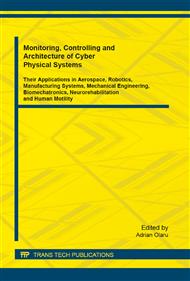[1]
Joseph S. Accetta, David L. Shumaker, The infrared and electro-optical systems handbook, Volume 2, Infrared Information Analysis Center, (1996).
Google Scholar
[2]
P. M. Moser, Mathematical model of FLIR performance, Naval Air Development Center, (1972).
Google Scholar
[3]
G. J. O'Neill, The quantification of image detail as a function of irradiance by empirical tests, NAVAIRDEVCEN Technical Memorandum NADC-202139: GJO, (1974).
Google Scholar
[4]
F. A. Rosell, Levels of visual discrimination for real scene objects vs. bar pattern resolution for aperture and noise limited imagery, Proceedings of the National Aerospace and Electronics Conference, Dayton, Ohio, June 10-12, 1975. (A75-37623 18-01) New York, Institute of Electrical and Electronics Engineers, Inc., 1975, pp.327-334.
DOI: 10.21236/ad0276588
Google Scholar
[5]
A. H. Blumenthal and S. B. Campana, An improved electro – optical image quality summary measure, Published in SPIE Proceedings Vol. 0310, (1981).
DOI: 10.1117/12.932850
Google Scholar
[6]
A. H. Blumenthal and S. B. Campana, Development of an image quality model for object discrimination, Proc. SPIE 0467, Image Assessment: Infrared and Visible, 24, (1984).
DOI: 10.1117/12.941579
Google Scholar


